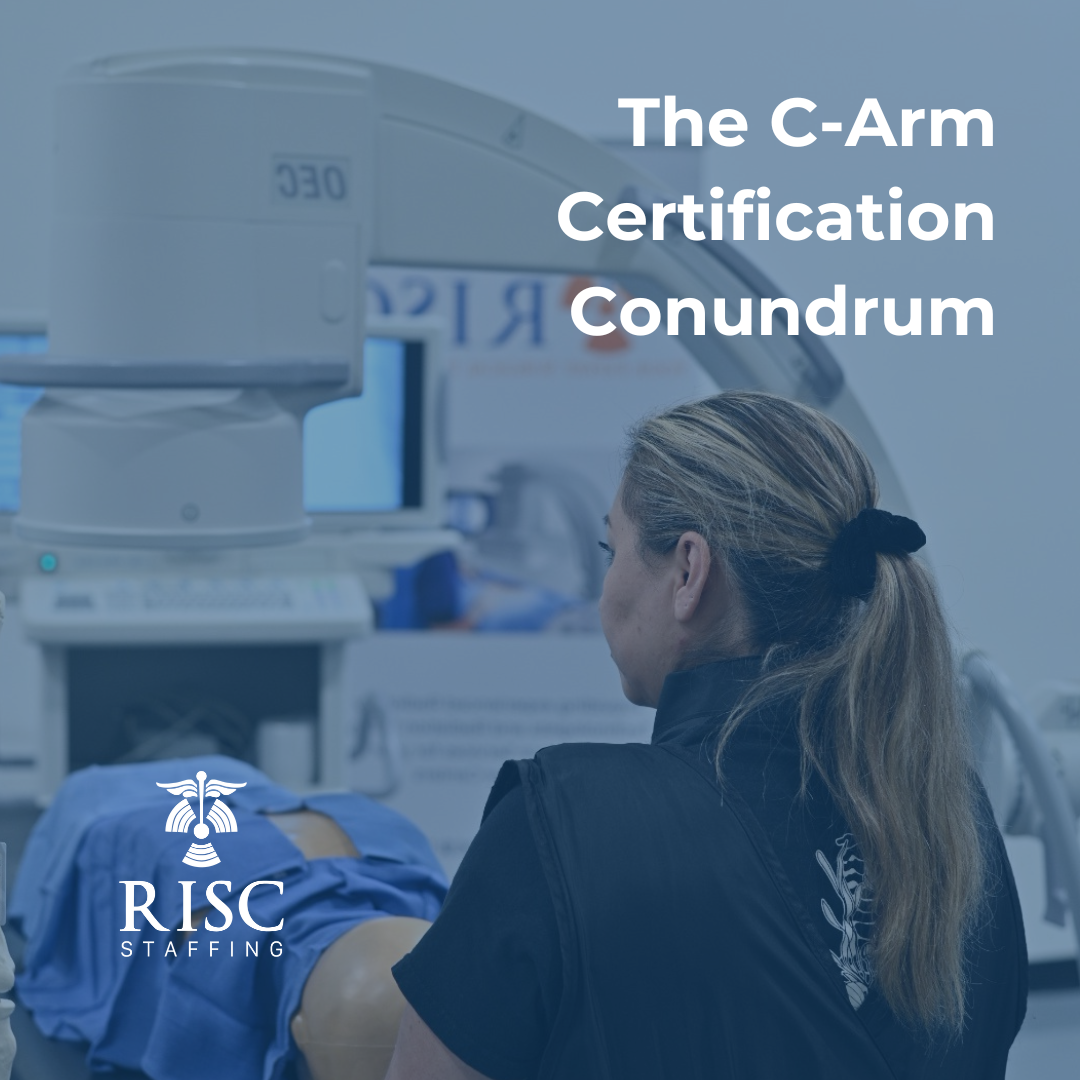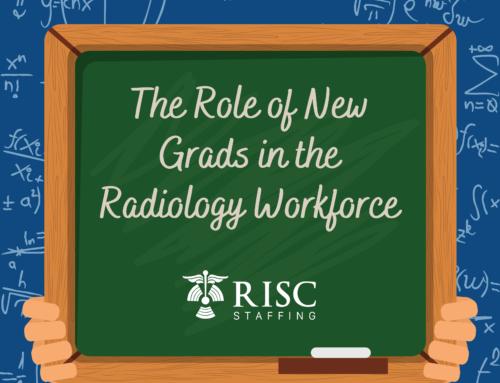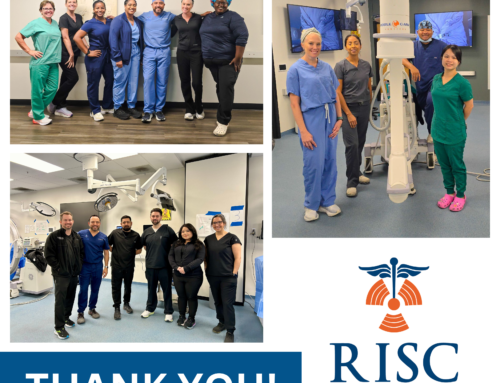The C-Arm Certification Conundrum
The C-Arm Certification Conundrum is one that we are passionate about in the fast-paced and ever-evolving world of healthcare where radiologic technology plays a pivotal role. Among the various tools and devices used by radiologic technologists, the C-arm is a standout due to its crucial application in providing real-time imaging during surgeries and other procedures. However, despite its importance, radiologic technologist students are not required to be certified in the use of C-arms. There are implications of this gap in education and why it might be time to reconsider how we train future radiologic technologists.
Understanding the C-Arm: A Vital Tool in Modern Medicine
The C-arm is a sophisticated piece of medical equipment used primarily in orthopedic, surgical, and emergency care settings. It consists of an X-ray source and a detector, connected by a C-shaped arm, which allows for flexible positioning around the patient to capture real-time images. These live images are crucial during surgeries, as they guide the surgeon in placing implants, aligning fractures, or navigating complex anatomical structures.
The C-arm is invaluable for its ability to provide immediate feedback, reducing the need for exploratory surgery and improving patient outcomes. Given its importance, one might assume that thorough training and certification in its use would be a standard part of every rad tech’s education. However, this is not the case, leading to questions about the adequacy of current training programs.
The Educational Landscape for Rad Tech Students
Radiologic technologists undergo extensive training, typically involving a combination of classroom instruction and hands-on clinical experience. Programs cover a wide range of imaging modalities, including X-ray, MRI, CT, and ultrasound. However, the curriculum tends to focus on the fundamental principles and techniques that apply across all imaging modalities rather than deep dives into specific tools like the C-arm.
This broad-based approach is necessary to ensure that graduates are well-rounded and capable of adapting to various imaging technologies. However, it also means that specialized tools like the C-arm may not receive the attention they deserve. Students may be introduced to the C-arm in their clinical rotations, but this exposure is often limited and lacks the depth of understanding and practice required for proficiency.
Why Isn’t C-Arm Certification Required in School?
The decision not to include C-arm certification in the standard rad tech curriculum can be attributed to several factors:
- Time Constraints: Radiologic technology programs are already packed with essential content, from anatomy and physiology to radiation safety and patient care. Adding certification for every specialized tool, including the C-arm, could overwhelm students and extend the length of the program.
- Diverse Career Paths: Not all rad tech graduates will work in settings where C-arm usage is common. Some may specialize in areas like mammography or MRI, where C-arm proficiency is less relevant. As a result, educational institutions may prioritize more universally applicable skills.
- On-the-Job Training: Many employers expect to provide additional training for specialized tools like the C-arm. This approach allows technologists to learn in the context of their specific work environment, where they can apply their knowledge directly to the types of procedures they’ll be supporting.
- Regulatory Standards: Certification requirements for radiologic technologists are often dictated by state or national regulatory bodies, which may not mandate C-arm certification as a prerequisite for licensure. This means schools are not compelled to include it in their programs.
The Impact of This Educational Gap
The absence of mandatory C-arm certification in rad tech programs has several potential consequences, both for the technologists themselves and the healthcare facilities that employ them.
- Preparedness of New Graduates: New graduates entering the workforce may find themselves ill-prepared for the demands of positions that require frequent C-arm use. This lack of preparedness can lead to longer onboarding times and a steeper learning curve as they acquire the necessary skills on the job. In a high-pressure environment like the operating room, this can be particularly challenging.
- Patient Safety Concerns: The C-arm, while invaluable, also poses risks if not used correctly. Radiation exposure, for example, is a significant concern. Technologists who are not fully trained in C-arm operation may struggle to minimize radiation doses or may inadvertently position the device in a way that compromises image quality or patient safety.
- Increased Training Burden on Employers: Healthcare facilities may need to invest more time and resources in training new hires who lack C-arm proficiency. This can be particularly burdensome for smaller facilities with limited training resources. Additionally, it can delay the technologist’s ability to contribute fully to the team, potentially affecting patient care.
- Confidence and Competence: A lack of formal training and certification in C-arm usage can affect a technologist’s confidence and competence. Without a strong foundation, they may feel uncertain in their ability to operate the device effectively, which can impact their overall job performance and satisfaction.
Bridging the Gap: The Case for C-Arm Certification
Given the critical role that the C-arm plays in many medical procedures, there is a strong case to be made for incorporating formal certification into rad tech programs. Here’s why this could be a game-changer for the profession:
- Enhanced Patient Safety: By ensuring that all technologists are thoroughly trained and certified in C-arm usage, healthcare facilities can reduce the risk of errors and enhance patient safety. Certified technologists will have a deeper understanding of how to operate the device correctly, minimizing radiation exposure and ensuring optimal image quality.
- Increased Employability: Graduates who are certified in C-arm usage may have a competitive edge in the job market. Employers are likely to favor candidates who can hit the ground running with minimal additional training. This can lead to better job prospects and potentially higher salaries for certified technologists.
- Shorter Onboarding Times: Certified technologists will require less on-the-job training, allowing them to become fully functional members of the healthcare team more quickly. This can be particularly beneficial in high-demand areas where rapid onboarding is essential to maintaining patient care standards.
- Improved Confidence and Job Satisfaction: Technologists who are well-trained in C-arm usage are likely to feel more confident in their abilities, leading to greater job satisfaction. They’ll be better equipped to handle the challenges of the operating room and will feel more empowered to contribute to patient care.
- Setting a New Standard in Radiologic Education: By incorporating C-arm certification into rad tech programs, educational institutions can set a new standard for the profession. This could lead to broader discussions about the importance of specialized training in other areas of radiologic technology, ultimately raising the bar for the entire field.
The Current State of C-Arm Training
While formal certification in C-arm usage may not be a standard part of rad tech education, many schools do provide some level of exposure to the device. Clinical rotations often include opportunities to observe and assist with C-arm procedures, giving students a basic understanding of how the device is used in practice.
In addition, some schools offer elective courses or workshops focused on advanced imaging techniques, including C-arm operation. These programs are typically optional and may not provide the depth of training needed for full proficiency, but they do offer a valuable introduction.
Outside of formal education, many healthcare facilities provide C-arm training as part of their onboarding process. This training is often hands-on and may be conducted by experienced technologists or through partnerships with equipment manufacturers. While this approach can be effective, it varies widely in quality and scope, depending on the resources available.
Challenges in Implementing C-Arm Certification
Despite the clear benefits, there are several challenges to implementing C-arm certification in rad tech programs:
- Curriculum Overload: Radiologic technology programs are already intensive, with a packed curriculum that covers a wide range of topics. Adding another certification requirement could be overwhelming for both students and educators, potentially leading to burnout or a dilution of other essential content.
- Resource Limitations: Not all educational institutions have access to C-arm equipment or the expertise needed to provide comprehensive training. Acquiring and maintaining this equipment can be costly, and schools may struggle to justify the expense if the demand for C-arm training is limited.
- Varied Clinical Experience: Clinical rotations are a critical component of rad tech education, but the quality and scope of these experiences can vary widely. Students in smaller or less specialized facilities may have limited exposure to C-arm procedures, making it difficult to ensure consistent training across the board.
- Regulatory Hurdles: Introducing a new certification requirement would likely require changes to accreditation standards and state licensing requirements. This could be a lengthy and complex process, involving input from multiple stakeholders, including educators, employers, and regulatory bodies.
- Balancing Generalization and Specialization: One of the strengths of radiologic technology programs is their ability to produce versatile graduates who can adapt to a wide range of imaging modalities. Adding specialized certifications like C-arm training could lead to a more fragmented educational experience, with students focusing on narrow areas at the expense of broader competencies.
Looking Forward: The Future of Rad Tech Education
The debate over C-arm certification is part of a broader conversation about how to best prepare radiologic technologists for the demands of the modern healthcare environment. As technology continues to evolve, so too must the education and training programs that support it.
In the future, we may see a shift towards more modular or customizable educational pathways, where students can choose to pursue additional certifications in specialized areas like C-arm usage or interventional radiology.






